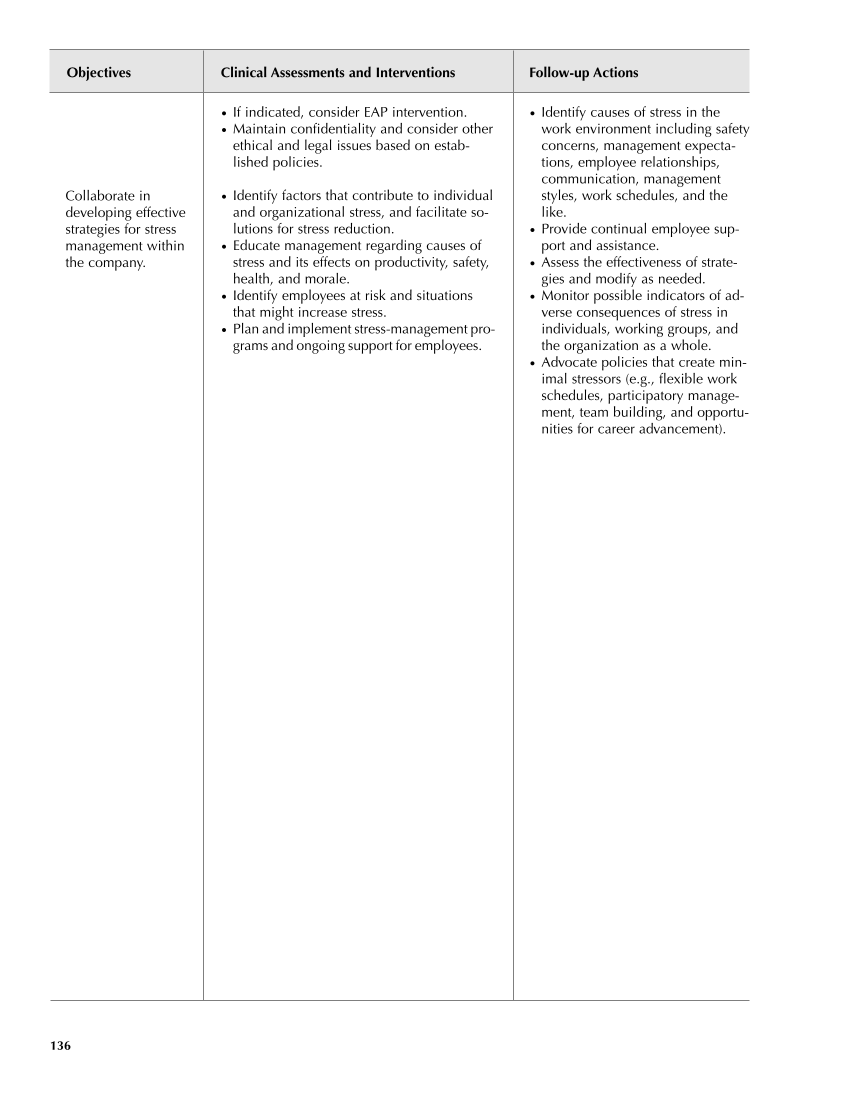Objectives Clinical Assessments and Interventions Follow-up Actions 136 ● Identify causes of stress in the work environment including safety concerns, management expecta- tions, employee relationships, communication, management styles, work schedules, and the like. ● Provide continual employee sup- port and assistance. ● Assess the effectiveness of strate- gies and modify as needed. ● Monitor possible indicators of ad- verse consequences of stress in individuals, working groups, and the organization as a whole. ● Advocate policies that create min- imal stressors (e.g., flexible work schedules, participatory manage- ment, team building, and opportu- nities for career advancement). Collaborate in developing effective strategies for stress management within the company. ● If indicated, consider EAP intervention. ● Maintain confidentiality and consider other ethical and legal issues based on estab- lished policies. ● Identify factors that contribute to individual and organizational stress, and facilitate so- lutions for stress reduction. ● Educate management regarding causes of stress and its effects on productivity, safety, health, and morale. ● Identify employees at risk and situations that might increase stress. ● Plan and implement stress-management pro- grams and ongoing support for employees. Guideline continues on next page
Purchased from OEM Press by (ge corporate access). (C) 2013 OEM Health Information, Inc. All rights reserved.












































































































































































































































































































































































































































